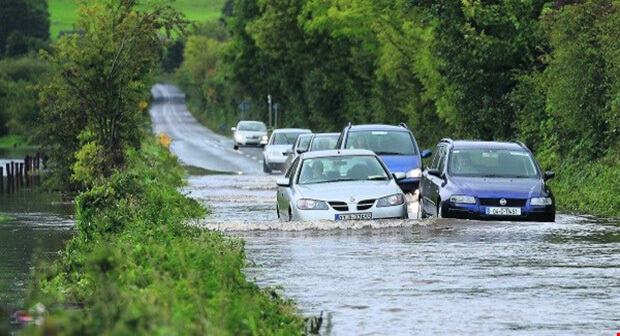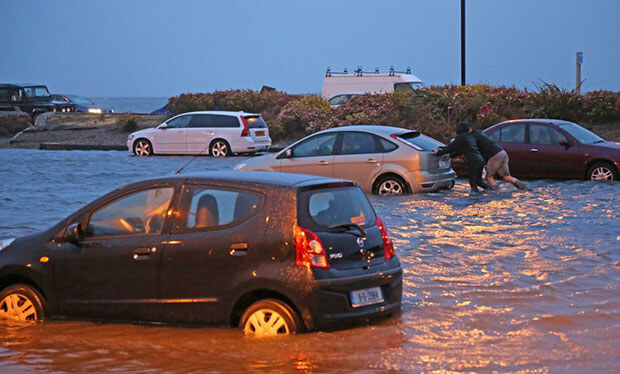Flood-Damaged Car - The Telltale Signs.

Winter is fast approaching and with all the talk of hurricanes and flooding in other parts of the world, we might consider what we should look out for if we suspect a car has undergone water damage.
If you are considering buying a car during the winter months and there are reports of flooding in particular areas of the country, we would always suggest that the first action should be to perform a MyVehicle.ie car history check.
If a vehicle has been categorised as written-off by an insurance company for flood damage that should show up in the history report.
It is possible, though, that a vehicle was damaged and but not in fact reported to an insurance company, and may not be recorded as being written off. In these cases.
It may not be initially obvious to the casual observer whether a car has been flooded or not, but there are a few simple checks which could go a long way to allay your worries or, potentially, give you cause to walk away from the deal.

Water damage can be hard to detect, so here are some telltale signs:
- Inspect the carpets to see if they show signs of having been waterlogged, such as smelling musty or having caked-on mud. Likewise, brand-new carpets in an older vehicle may be another red flag. Anyone trying to sell a flooded vehicle will have thoroughly valeted and cleaned it, but there can still be a lingering scent of dampness. There can also be lingering wetness, no matter how thoroughly it has been dried out, so have a look under the carpets and feel around for wet or damp underlay.
- Have a look out for anything that does not look quite right. The car may have a brand new set of filters on it, but it’s not due a service. Maybe the owners manual is missing. Does the car smell strongly of air freshener?
- Electrics will be the first things to be damaged by any flood water, so be suspicious if there are non-functioning buttons and switches, or if things like the heater fan isn’t working properly.
- Take a good look under the metal runners that the seats sit on. You would never normally find corrosion or rust there, unless, of course, it has been flooded. If you do find rust there, that could be a dead giveaway giveaway.
- Check the seat-mounting screws to see if there is any evidence that they have been removed. To dry the carpets effectively, the seats must be removed and possibly even replaced.
- Inspect the lights. Headlights and taillights are expensive to replace, and a visible water line may still show on the lens or reflector.
- Inspect the difficult-to-clean places, such as gaps between panels in the boot and under the bonnet. Waterborne mud and debris may still appear in these places.
- Look for mud or debris on the bottom edges of brackets or panels, where it wouldn’t settle normally.
- Search around the engine compartment. Water lines and debris can appear in hard-to-clean places, such as behind the engine.
- Look at the heads of any unpainted, exposed screws under the dashboard. Unpainted metal in flood cars will show signs of rust.
- Check to see if the rubber drain plugs under the car and on the bottom of doors look as if they have been removed recently. That may have been done to drain floodwater.
If you’re from an area affected by a flood and have a car that wasn’t damaged, be aware that buyers might suspect it was. Consider having a mechanic inspect your car before you put it up for sale so that you can present potential buyers with a clean bill of health.
Remember though, not every car that’s been in a flood is categorised as written off, and not every flooded which has been properly repaired is necessarily a bad buy. A well repaired car, with the work done by a qualified mechanics, can still be a good purchase, but you need to make sure that you are armed and ready to spot a bad one.
(As always, if you or a family member are considering buying a used car, don’t buy until you run a car check report with MyVehicle.ie where you will find out the true history of the vehicle.)

Author

Justin Kavanagh
Justin Kavanagh is a recognised leader
in automotive intelligence and vehicle
data supply to the entire motor industry.
He has almost 20 years experience in
building systems from the ground up.
As the Managing Director of Vehicle
Management System, he understands the
need and importance of trustworthy and
reliable vehicle history and advice to
both the trade and the public.
Follow me on LinkedIn